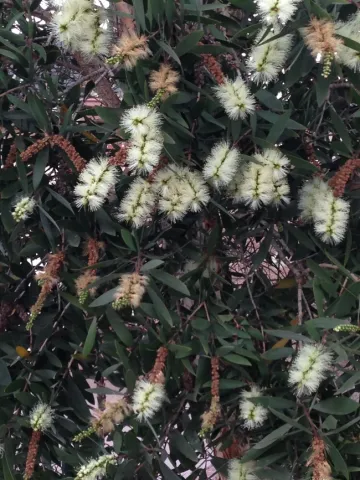Melaleuca

Cajeput Or Paperbark Tree
By Leslie Stevens UCCE Master Gardener
Melaleuca quinquenervia
Planting area: Sunset Zones 9, 12, 13, 15 -17 and 20 - 24; H1, H2
Size: 20-to-40 feet high; 15-to-25 feet wide
Bloom Season: summer to fall
Exposure: full sun to partial shade
Pruning needs: primarily to remove splitting or damaged branches, as well as minor shaping
Water needs: tolerates wet or dry soils; drought tolerant once established
Snapshot:.
This tall, slender Australian native tree thrives in San Luis Obispo County's coastal zones but won't tolerate its colder inland valleys. Melaleucas are commonly used as street trees and windbreaks, as well as in parks and residential landscapes.
This fast-growing member of the Myrtle family can be identified by its elliptical, olive-green leaves; thick, papery bark that peels in layers; and showy cream or yellow bottlebrush-type flowers in summer or fall. The flowers also prove irresistible to bees.
Another prominent feature of this melaleuca is its clusters of woody seed pods that cling to branches for years and provide food for numerous birds, insects and other wildlife.
Melaleucas suffer from few pests or diseases other than occasional phytophthora and root rot caused by overly wet soils.
The tree is known to cause respiratory problems for some people, and its sap also can irritate skin.
In Florida, where this tree was initially introduced into the United States to help drain swamps in the early 20th Century, it is now labeled an invasive species by the USDA.
